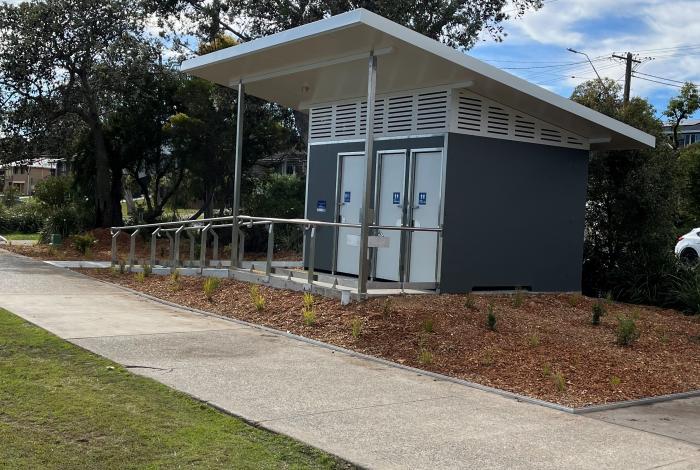Draft Central Coast Public Toilet Strategy
Public toilets are vital community infrastructure that support the health and wellbeing of Central Coast residents, workers and visitors.
Central Coast Council have drafted a Public Toilet Strategy (Strategy) to show how we are planning to manage our public toilets across the Central Coast over the next 22 years, to make sure we have a network of contemporary, accessible and sustainable public toilets that meet the needs of our community.
The Strategy has been developed with input from:
- the tourism industry
- community groups and progress associations
- outreach services such as homeless support, community care and neighbourhood centres
- NSW Health
- sporting groups
- accessibility advocates and Disability Inclusion Action Plan reference group members
- same sex and gender diverse communities.
These groups helped us:
- understand community and user groups requirements for public toilet infrastructure
- gain an understanding of the current community and stakeholder concerns and values
- shape management options.
Have Your Say
We’re inviting the community to have their say on the draft Strategy between 27 September and 8 November 2024 by:
- reading the draft Strategy
- reading the frequently asked questions (available below)
- contributing to and joining the conversation on our interactive map and sharing your ideas, suggestions and opinions click here.
- Completing the online submission form (preferred)
- email: ask@centralcoast.nsw.gov.au
- Post: PO Box 20, Wyong NSW 2259 addressed to the Chief Executive Officer, Mr David Farmer
When providing feedback to Council, your attention is drawn to the provisions of the Government Information (Public Access) Act 2009 which allows for possible access to certain public and personal documentation. View our privacy statement.
Segmented Documents
Public Toilet Strategy Overview
Timeline
Who's listening
A public toilet is a restroom accessible to the public, operated and managed by Council. To ensure public toilets are safe, clean, accessible and meet community needs, Council has developed a strategy to guide their planning, construction, maintenance and renewal.
Toilets were assessed based on their condition, usage and alignment with community needs. Potential locations for new toilets were identified based on similar criteria.
Funding has been included in Council's long term financial plan from general revenue. Council will also be looking for grant funding opportunities throughout the program that can be used to offset costs.
You can provide feedback on the draft Public Toilet Strategy through the Your Voice Our Coast platform.
Toilet designs were created in consultation with the community and key stakeholders to ensure they meet accessibility, sustainability and aesthetic standards, while providing a consistent platform that is easily recognisable for users and operational efficiencies for council.
Toilet designs were created in consultation with the community and key stakeholders to ensure they meet accessibility, sustainability and aesthetic standards, while providing a consistent platform that is easily recognisable for users and operational efficiencies for council.
While most toilet designs will follow pre-approved design and standards, community input will be sought through consultations as the program progresses. Although the overall plan and designs are locked in, the community will still have the opportunity to influence certain elements, such as external artwork, some colours (for local identity), external amenities like showers and bike racks and possible locations if we are intending to relocate a building.
The implementation of this strategy will extend over a 22-year period, beginning upon Council adoption, which is expected to occur in 2025.
Council has established a prioritised list of public toilet projects. Specific project timelines will be communicated as projects progress.
Communities will be involved in consultations in the years leading up to the implementation of projects in their respective locations.
The prioritisation of these projects is based on various factors, including the current condition of existing assets, service demand, alignment with other relevant strategies or plans, planned or underway projects, projected area growth and timing and feedback from key stakeholders and the community.

